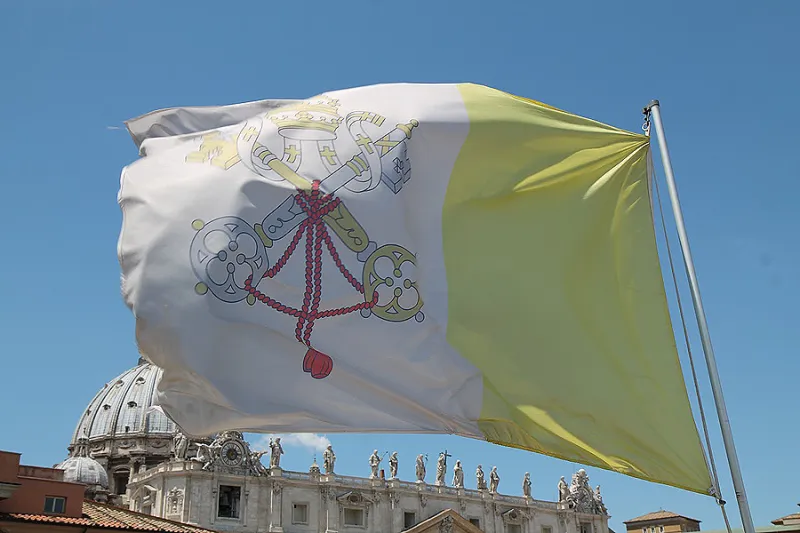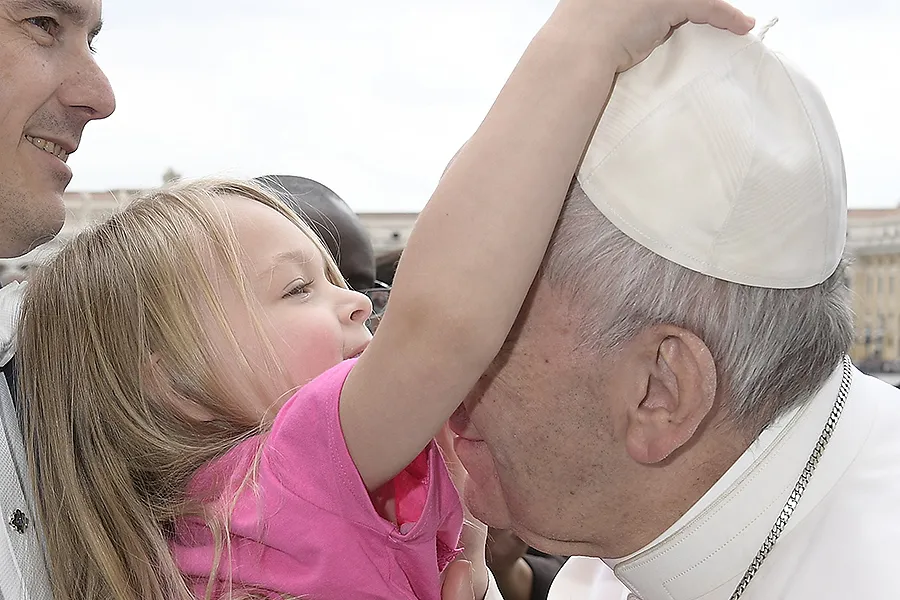
Vatican City, Apr 23, 2021 / 07:15 am (CNA).
Next week, Moneyval will issue a long-awaited progress report on how the Holy See has strengthened its juridical framework to counter money laundering.
The report will assess how the Holy See has been working in the last two years and focus on the effectiveness of the judicial system. That is: in terms of numbers, how many prosecutions follow the suspicious transaction reports? On a broader scale, it will consider whether the eventual lack of prosecutions points to the poor quality of the reporting system.
Moneyval is the committee of the Council of Europe, which assesses compliance with the international financial transparency standards of the countries participating in the process. The Holy See joined the organization in 2011. The first Moneyval comprehensive report on the Holy See/Vatican City State was released in 2012.
Moneyval has since issued four other progress reports on the Holy See. Like any other state participating in the process, the Holy See has kept adjusting and updating its reporting system to improve its effectiveness.
The Moneyval evaluations have so far, been generally positive. The latest progress report was released in 2017. Next week’s report will come at the end of Moneyval’s plenary meeting on April 26-30.
A vital issue will be the number of processes carried out following reports of financial impropriety. In 2017, Moneyval said that “the results on the law enforcement/prosecutorial/judicial side two years after the last review remain modest.”
The upcoming report was supposed to be out in 2020. The pandemic has slowed down the process.
Meanwhile, many things have changed for the Holy See. Overwhelmed by the scandal concerning the Vatican Secretariat of State’s investment in a building in London, Pope Francis has, step by step, dismantled and rebuilt Vatican finances. The Secretariat of State has also lost the ability to manage its funds in favor of the Administration of the Patrimony of the Apostolic See.
Also, all the Vatican officials who helped to build up the Vatican financial transparency system and strengthened relations with Moneyval are no longer working for the Holy See. The committee, therefore, has lost all of its historical references in the Holy See. This can make a difference.
Without going into the details of the financial transactions in question, it is worthwhile reconstructing some passages of the story that led to the current situation.
In 2018, the Secretariat of State decided to invest in a luxury property in London. Two brokers succeeded in managing the investment until the Holy See, to avoid further losses and regain control of the operations, decided to take over the building.
In leaving the ongoing operations, the Holy See had, by contract, to pay the intermediaries. The Secretariat of State then asked the Institute for Works of Religion (the IOR or “Vatican bank”) for a loan to complete the investment.
At first, the IOR agreed. Then it changed its mind and reported the operations to the pope. After that, a summary procedure ordered by the pope began. This led to searches in the Secretariat of State and the Financial Intelligence Authority (AIF), and the suspension of five Vatican officials (and a further one) in the course of the investigations.
Pope Francis proceeded to change the top management of Vatican finances profoundly. Tommaso Di Ruzza, director of the AIF, was not renewed in his post, replaced by Giuseppe Schlitzer. René Brülhart, president of the AIF, was not renewed either, replaced by Carmelo Barbagallo. It was decided that the Secretariat of State would no longer manage funds, effectively emptying its administrative office competencies.
Who, then, is now in charge of the Vatican’s finances?
First of all, the Secretariat for the Economy. The body founded in 2014 and initially led by Cardinal George Pell has a very active prefect in Fr. Juan Antonio Guerrero Alves, S.J. He presented the budget of the Holy See last year and also the budget planned for next year, which he described as a “mission budget.” He stressed that Peter’s Pence would cover some of the deficit in the 2021 budget with 30 million euros ($36 million) out of the expected 47 million ($57 million).
Therefore, the Secretariat for the Economy has taken on the role of control and direction that should allow Vatican finances to be better managed. This should minimize the risk of errors — such as relying on the wrong intermediaries.
Then the Administration of the Patrimony of the Apostolic See (APSA) is increasingly called to become a sort of “central bank” and has a central position in controlling investments.
To carry out this process, Fabio Gasperini, a layman with a long international career and earlier experience in the Vatican City State administration, was appointed secretary-general of APSA, becoming the first layman to hold the position.
But the only body from which APSA has received the management of the funds, by papal decision, is the Secretariat of State, following the investment scandal. When will the transfer of funds and investments from the Vatican Governorate and the Congregation for the Evangelization of Peoples to APSA take place?
The AIF, the Vatican’s financial intelligence body, is currently reaping the rewards of previous work. Barbagallo, the new president, worked to update the body’s statutes and for a change of name: the AIF is now known as the Financial Information and Supervisory Authority (ASIF). The changes to the statutes make the role of the authority’s president more central.
The ASIF also now responds to the general regulations of the Roman Curia. This might be problematic. The ASIF oversees only the IOR operations. But the IOR itself kept its autonomy, even in terms of the curial regulations. There is, therefore, a control body that has less independence than the controlled body — also in terms of wages.
In addition to these reforms, the Vatican’s financial watchdog has faced some issues with international partners. After the search and seizures in the AIF’s offices in October 2019, the Egmont Group, which brings together financial intelligence units from all over the world, suspended the AIF from its secure communication network.
The AIF was readmitted only when it signed a memorandum of understanding with the Vatican Tribunal guaranteeing the confidential use of the international intelligence documents seized.
Balancing the books remains a problem for the Holy See. The pandemic has put further strain on the Vatican coffers. While entities such as the IOR maintain their autonomy, the pope has sought to cut costs by reducing the wages of high-ranking officials and employees of the Holy See and Vatican City State. ASIF is affected by these moves. The IOR is not.
The effectiveness of this provision must still be proved in practice. The cuts will be applied only to the basic salary for executives, while additional remuneration is not affected. The expensive external advisers will remain and can still be hired.
These details show that the Vatican financial system does not currently have a clear direction. There was a legal framework, maintained since the pontificate of Benedict XVI, which had guaranteed that the Holy See’s international position was considered. That framework is now being undermined by a series of decisions that appear unrelated to each other and then need to be adjusted.
This is evident, fundamentally, in the London affair that has occupied the Holy See for the last year and a half. It has been said that it is good that the troubles have been cleared from the inside. But there are more questions than answers.
The Secretariat of State asked the IOR for an advance, to be repaid with interest, to conclude the London operation. Although the IOR made it clear in its latest annual report that it cannot lend money, it must be remembered that the institute supports the Church in its mission. It can give advances — and it has done so, intervening in support of financially insolvent dioceses such as that of Maribor in Slovenia.
And in fact, the IOR had initially accepted the request from the Secretariat of State. But a few days before everything was defined, the IOR changed its mind, reported everything to the pope, and thus started the Vatican prosecutor’s investigation. Why did the IOR alter course?
It is evident that the challenge facing the Holy See is not only economic. Although deficits have to be addressed, the real issue for Vatican finances is the institutional framework. The institutional crisis, in the end, could hit the Holy See in the evaluation of Moneyval.
Will the change of name of the AIF to ASIF be well received? Will the reporting regime be deemed reliable? If so, how will the Vatican court’s work be considered? The evaluation will be based on what has happened in previous years. It will not refer to the latest changes. But these changes could have an impact on the general judgment.
If you value the news and views Catholic World Report provides, please consider donating to support our efforts. Your contribution will help us continue to make CWR available to all readers worldwide for free, without a subscription. Thank you for your generosity!
Click here for more information on donating to CWR. Click here to sign up for our newsletter.





Leave a Reply